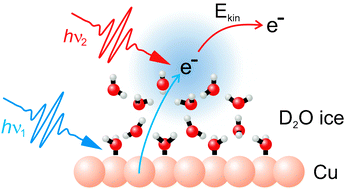A surface science approach to ultrafast electron transfer and solvation dynamics at interfaces†
Abstract
Excess electrons in polar media, such as

- This article is part of the themed collection: Chemistry at surfaces
a
Freie Universität Berlin, Fachbereich Physik, Arnimallee 14, 14195 Berlin, Germany
E-mail:
wolf@physik.fu-berlin.de
Excess electrons in polar media, such as

 Please wait while we load your content...
Something went wrong. Try again?
Please wait while we load your content...
Something went wrong. Try again?
J. Stähler, U. Bovensiepen, M. Meyer and M. Wolf, Chem. Soc. Rev., 2008, 37, 2180 DOI: 10.1039/B800257F
To request permission to reproduce material from this article, please go to the Copyright Clearance Center request page.
If you are an author contributing to an RSC publication, you do not need to request permission provided correct acknowledgement is given.
If you are the author of this article, you do not need to request permission to reproduce figures and diagrams provided correct acknowledgement is given. If you want to reproduce the whole article in a third-party publication (excluding your thesis/dissertation for which permission is not required) please go to the Copyright Clearance Center request page.
Read more about how to correctly acknowledge RSC content.
 Fetching data from CrossRef.
Fetching data from CrossRef.
This may take some time to load.
Loading related content
